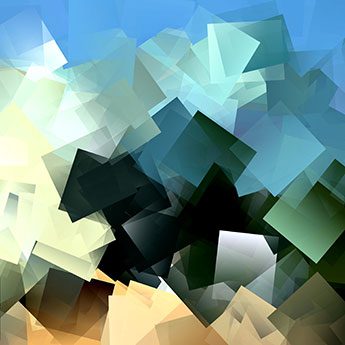Some people sing in the shower. I think when I drive.
I accomplish this task via a counter-revolutionary practice; I power down all forms of media input while behind the wheel. No radio, no ear buds, no texting.
This admittedly drastic step makes me more reflective, at least for a few minutes each day. It helps me find patience for ill-timed stoplights and overly aggressive rush-hour drivers. (You know who you are.) By choosing the quiet I don’t have to listen to all the inane morning-drive talk or fuss with my iPod when I should be focused on the texting driver meandering in the lane ahead of me—the one who hasn’t yet noticed the trio of deer bounding across Patterson Avenue.
One icy morning a driver in a boxy Cube sailed past me. I caught up to him at the next inevitable red light. To pass the time—and given that I just can’t help myself—I began reading his bumper stickers. A particularly clever piece of car graffiti screamed for attention. In ironically bright colors it said, “WORRY,” the “O” appearing as a star-spangled frowny face. Give the designer an A for creativity and a D– for motivational skills. Then, rebalance his (her?) meds.
Also catching my eye was the customized (of course) license plate: “ART IS.” That could mean the driver is named Arthur and works in information systems. I’ll defer instead to the least complex approach (thank you, William of Ockham) and take it as a basic propositional statement. Art simply is. And thank God it is! What a mundane species we would be if not for art!
But why art? Why does it even exist?
An ancient wisdom book begins with a basic propositional statement: “In the beginning God . . .” That’s not how you or I would start a history of all that is. It’s much too presumptive. Yet that is how the Bible begins. It assumes that God is.
Later, as the story unfolds, God reveals Himself in equally perplexing ways. We might even say inscrutable. When He got Moses’s attention in the desert, God essentially said, “Look, I want you to go to the most powerful leader in the world and tell him you’re taking my people out of Egypt.” When Moses asked God just who he should say told him to do this, God gave this self-existing reply: “I am who I am.”1
This presumption that God exists continues in the New Testament. When John the disciple told the story of Jesus entering the world, it looked nothing like the traditional Christmas story. Instead, John echoed Genesis 1.
In the beginning the Word already existed.
The Word was with God,
and the Word was God.
He existed in the beginning with God.
God created everything through him,
and nothing was created except through him.2
Put most simply, God is. And John asserts that Jesus (the Word) was with God and was God before the beginning. This mysterious, unknowable Source of all creativity created us, and then announced that we are designed in His image.3 We create art because we are made in the image of the Master Artist.
We see God’s art in every freshly painted sunrise and sunset. We observe it in the elaborate intricacy and functional elegance of a single insect wing. We feel this art when the wind whips across a forlorn sand dune or when the ocean waves slam against a remote rocky shoreline. Every cloud formation, every showy display of the northern lights, every heavenly body traversing an undiscovered stellar system in a galaxy somewhere in our immeasurable cosmos speaks of an incomparably gifted Designer.
Here on this improbable planet, we see how His creatures imitate the Artist. We hear it in Mozart, in Bach, in Satie and Tchaikovsky, in the soulful ballads of Van Morrison, in the eclectic musical stylings of “The Revolutionary Army of the Infant Jesus.” We see it in time-defying masterpieces like The Starry Night, Pieta, and The Last Supper. We immerse ourselves in it as we watch a rendition of Hamlet, or Les Miserables, or Hamilton. Human beings make art because our Maker is an Artist.
We’ve all got to start with one assumption or the other. Either God is. Or He isn’t. No other alternative can make sense. But if He isn’t, how did all this creativity and diversity burst forth? It’s preposterous to think of an impersonal, noncreative entity creating all this . . . creativity.
As John concludes his introduction:
The Word gave life to everything that was created,
and his life brought light to everyone.
The light shines in the darkness,
and the darkness can never extinguish it.4
God is.
- See Exodus 3:1–17
- John 1:1–3
- Genesis 1:26
- John 1:4–5

